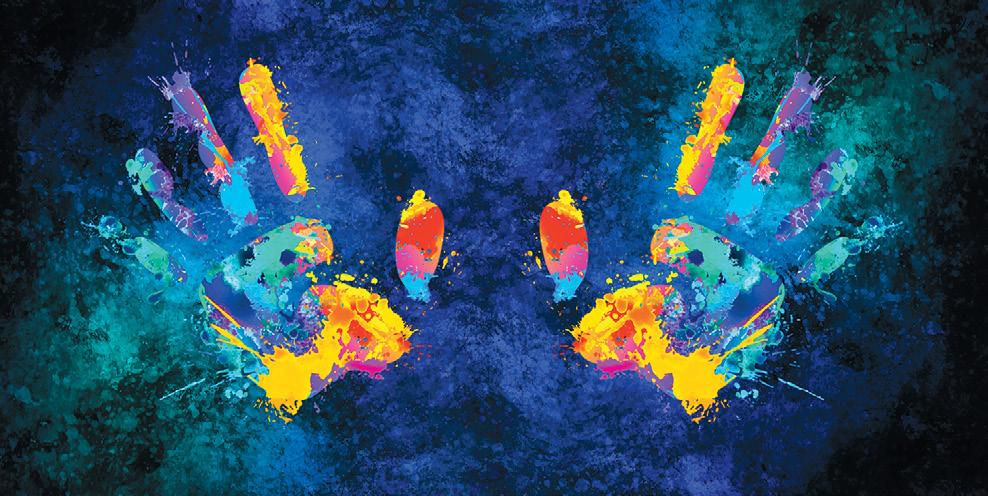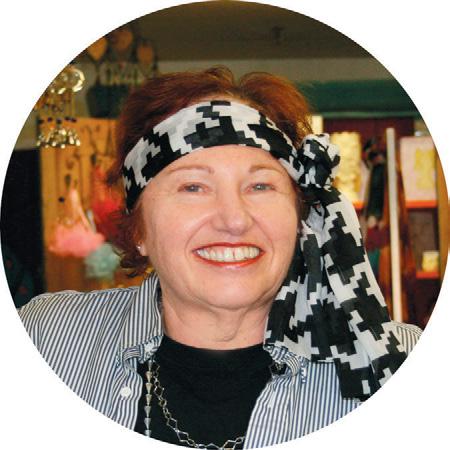
3 minute read
healthy kids
The Colors of Healing
ART THERAPY FOR KIDS
Advertisement
by Marlaina Donato
Opening a brand-new box of crayons or making a happy mess with homemade salt dough can provide hours of fun for most kids, but art therapy—based in a clinical setting—can help children achieve emotional equilibrium, cultivate social skills and increase their capacity for learning. Dipping a brush into bright colors or creating a collage under the guidance of a qualified therapist can help a child express what is beyond spoken language: unprocessed trauma, emotional and physical pain or the multilevel challenges of autism spectrum disorder.
“Art therapy is completely different from arts and crafts, or even teaching a child how to do art. The idea behind art therapy is that not everyone attending therapy is able to talk about what is going on inside of them,” says Robyn Spodek-Schindler, owner of Paint the Stars Art Therapy, in Manalapan, New Jersey.
Art and the Nervous System
According to 2018 research published in the Journal of Applied Psychology & Behavioral Science, painting-based art therapy has been effective in reducing symptoms of depression and anxiety in preschool-aged children. Dipping into the unconscious wellspring of creative impulse through doodling and drawing, finger painting or taking a photograph can help kids bounce

Sukjai Photo/AdobeStock.com
back more easily from bullying or family conflicts, including divorce. Splashing color on a canvas or throwing pottery has been shown to enhance fine motor skills, increase attention spans and instill a sense of accomplishment. For those that are not neurotypical, engaging in guided artistic expression can foster sensory integration and promote positive social interaction.
“I have worked with children who have lost a parent, experienced abuse, abandonment, consequences of addiction in the family, COVID [-19] anxiety and autism spectrum disorders,” says Andrea Davis, founder and CEO of Dallas Art Therapy, in Richardson, Texas. “Many times, the body is expressing the trauma in the form of sleep disturbance, eating changes, anxiety, depression and panic attacks, to name a few. Art-making bypasses the brain’s trauma response. The art therapist is trained to support the person in the process of creation and allows the person to utilize their other senses to express themselves.”
Celeste Wade, an art psychotherapist at the Child and Family Art Therapy Center, in Haverford, Pennsylvania, emphasizes that emotional processing cannot occur when an individual is on the alert for potential danger, a physiological response from an overstimulated amygdala. “Trauma needs to be processed for the client to gain mastery and function in a calm state versus fight, flight or freeze. Art making can also activate this area of the brain and have calming effects to counteract trauma responses,” she says.
Willingness, Not Talent
The art therapist provides a nourishing presence without art instruction or critiquing, and sessions can be private, in a group setting or include family members. Conversation, combined with art making, is typical in any art therapy session. Schindler stresses that creating pretty images is not the goal of an art therapy session and dispels the common assumption that “the person attending art therapy needs to have either a talent in art or an interest in art. They just need the willingness to participate in a session.” Some children see immediate benefits, while others realize emotional progress after several sessions.
Art therapy, sometimes in conjunction with other modalities, not only gives children a voice, but provides them with an opportunity to stretch their wings. Group therapy, says Davis, “can look like working together to create a collaborative mural. In the process, taking turns, hearing one another’s ideas, sharing materials, respecting boundaries and each other’s art becomes an important part of meeting goals.”
During an initial art therapy assessment, Wade might ask a client to draw a family of animals, which creates an opportunity “for the client to share about their own family dynamics in a safe way. If the client has experienced any type of familial trauma and I were to present the same directive as, ‘draw you and your family doing something,’ the child may be more hesitant or may shut down.”
In a world that can be overwhelming, self-expression through art can give a young person a safe harbor. Schindler accentuates human rapport in the clinical setting, saying, “Art, much like play, is a universal communication tool for children. Sometimes you just feel better when creating and sharing with a trusted person.”
Marlaina Donato is an author, painter and composer. Connect at WildflowerLady.com.
Susane Grasso
R E IK I MASTE R

Relaxation Therapy Chakra Balancing Aura Readings
203.500.6950
DISTANCE REIKI AVAILABLE
Be present in all things and thankful for all things.
~Maya Angelou





